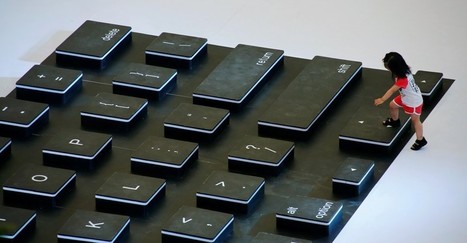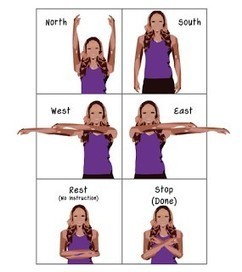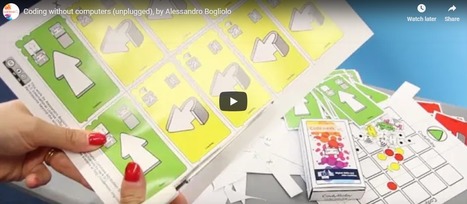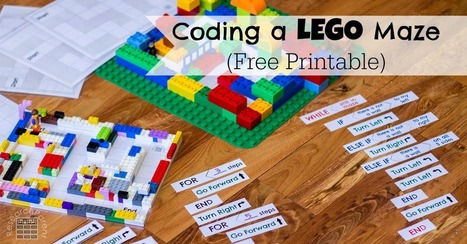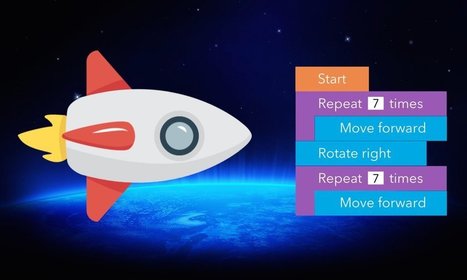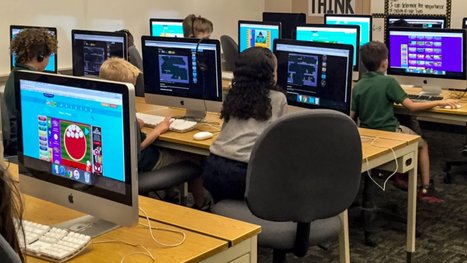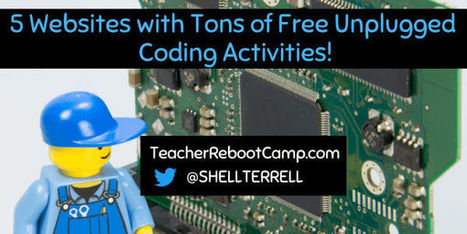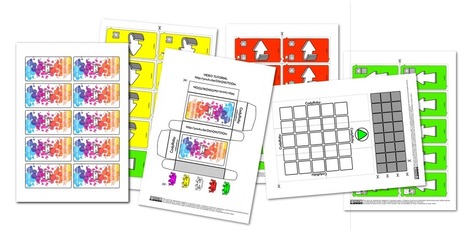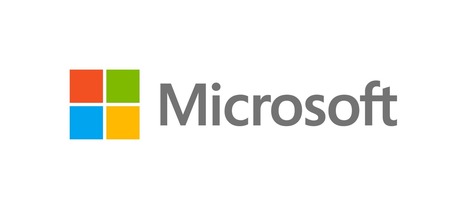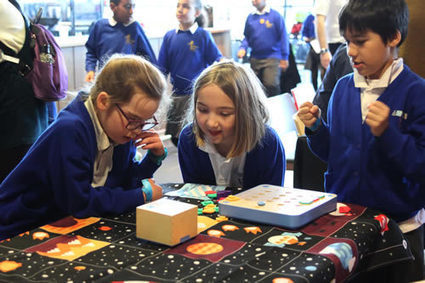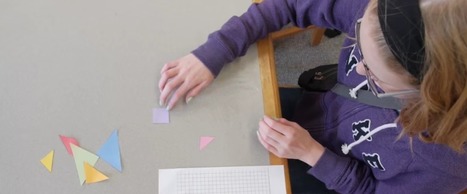 Your new post is loading...
 Your new post is loading...

|
Scooped by
John Evans
|
The Finns are pretty bemused by Americans’ preoccupation with whether to put iPads in every classroom. If a tablet would enhance learning, great. If it wouldn’t, skip it. Move on. The whole thing is a little tilting-at-windmills, anyway.
That was the gist of the conversation one recent morning at the Finnish Embassy in Washington, D.C., where diplomats and experts gathered to celebrate the country’s education accomplishments as Finland turns 100. And Americans could stand to take notes. (Yes, from Finland—again.)
Coding and programming are now part of the curriculum in the Scandinavian country, and they’re subjects kids tackle from a young age. But unlike in some parts of the United States where learning to code is an isolated skill, Finnish children are taught to think of coding and programming more as tools to be explored and utilized across multiple subjects.
That mindset aims to accomplish a couple of things: to make coding and programming accessible to kids with a variety of interests, and to show students why understanding how technology works is relevant to their lives by linking its use to a multitude of activities.

|
Scooped by
John Evans
|
Leka DeGroot can relate to teachers who would like to bring coding to their classrooms but just can’t fathom fitting it in.
“Teachers often tell me, ‘It sounds great but I don’t have time, or I don’t have the skills,’ but you don’t have to be a computer scientist to teach coding,” assures DeGroot, a first grade teacher at Spirit Lake Elementary in Spirit Lake, Iowa.
Just a few years ago DeGroot explored coding for the first time through Hour of Code. Today, she’s a trainer for Code.org. She's driven by a desire to introduce students to computational thinking and integrating coding into the curriculum.
“The basic concepts of listening to each other, communicating and collaborating, these are not just for computer science. We want every student to have those skills,” DeGroot says. Even the youngest students benefit from the critical-thinking and problem-solving skills that coding provides.
Not only do kids learn from it, they love it! Recently, for example, collaborated with a teacher in Wisconsin to have students write loop code dances for each other and then held a Google Hangout dance party.

|
Scooped by
John Evans
|
Students will learn that events are a useful way to control when an action happens, and can even be used to make make multiple things act in sync. In programming, you can use events to respond to a user controlling it (like pressing buttons or clicking the mouse). Events can make your program more interesting and interactive.

|
Scooped by
John Evans
|
The Hour of Code is coming up at the beginning of December. While there are a number of online activities you can do with your children, there ways you can celebrate offline. This Grouchy Ladybug drawing page features an algorithm for your children to follow. By the time they have drawn what each block asks them to, they will have an illustration based on the book.
This Hour of Code activity also gives your children a chance to work telling time. Your children will need to draw the minute and hour hand so they point to the correct places on the clock. While it may not take your children an hour, it is a fun way to celebrate the Hour of Code and explore a book that features clocks.

|
Scooped by
John Evans
|
Coding is the language of things, which allows us to write programs to grant new functionalities to the tens of billions of programmable objects around us. Coding is the fastest way to make our ideas come true and the most effective way to develop computational thinking capabilities. However, technology is not strictly required to develop computational thinking. Rather, our computational thinking skills are essential to make technology work.
In this video, Alessandro Bogliolo, Professor of Computer Systems in Italy and Europe Code Week Coordinator, will introduce unplugged coding activities that can be practiced without any electronic device. The main purpose of unplugged activities is to lower the access barriers to bring coding in every school, regardless of funding and equipment.
Unplugged coding activities unveil the computational aspects of the physical world around us.
There’s no denying it. For better or worse, technology is taking over the world. Being able to program a computer is a skill that will serve our children well in the future. I didn’t write my first simple program until I was 18, but ultimately I got my PhD and worked full-time writing and operating codes for scientific research. It was a skill that I’m so grateful to have developed as it now allows me to earn money from home and be with my kids all day. I don’t expect my children to wait until they are in college to learn the principles of coding. I believe that even my kindergartner is fully capable of getting down some of the basics.

|
Scooped by
John Evans
|
Computer science isn’t just about writing programs. Students need to learn concepts such as computational thinking, algorithms and efficiency.
Here we have provided a short unplugged activity where students will use features and yes/no questions to build a decision tree. Students are encouraged to focus on efficiency and build a tree with the shortest number of steps. The activity is based on classifying the planets, so is suitable for a computer science or a science class.
There are a couple of extension options at the end for students who move through this more quickly or for those that need a challenge.
This activity is best done in groups, so students can discuss which questions and what order make for the most efficient process. Working in a group encourages them to articulate their thoughts and listen to others’ views, rather than just using trial and error.
Students will write an algorithm for classifying different planets. We are going to start small, with just 4 planets.
Instructions

|
Scooped by
John Evans
|
Computer coding is essentially a language that computer uses. When we think about helping kids learn computer coding, we automatically think we need a computer first. But in fact, there are many ways to learn computer coding without a computer, as many thinking and coding approach can be learned in different activities off-screen. Today we share some off-screen activities that teach kids computer programming.

|
Scooped by
John Evans
|
From robots to Minecraft, there are thousands of different ways to introduce programming to your class in fun and interactive ways for the upcoming Hour of Code (December 8-14). While most apps and tutorials do require internet connected computers or mobile devices, it does not mean that schools without this level of technology cannot get involved. In fact, coding with paper can be an even more engaging and meaningful way to introduce students to early programming concepts.
Updated December 2016
"According to Code.org, 90 percent of parents in the U.S. want their children to learn computer science—it will be crucial for many jobs in the near future—but only 40 percent of schools teach it. Critics claim that it is mainly the more affluent schools that offer computer science courses, thus denying those who attend poorer schools the chance to learn necessary skills. A focus on STEM is not enough: Code.org also reports that while 70 percent of new STEM jobs are in computing, only 7 percent of STEM graduates are in computer science. It is imperative that savvy schools begin to focus some STEM resources on computer science and programming.
In my opinion, parents of every student in every school at every level should demand that all students be taught how to code. They need this skill not because they’ll all go into it as a career—that isn’t realistic—but because it impacts every career in the 21st-century world. Any country recognizing that will benefit in the long term.
With the following resources, you can teach programming to every student and every age."
|

|
Scooped by
John Evans
|
"CS Unplugged is a collection of free teaching material that teaches Computer Science through engaging games and puzzles that use cards, string, crayons and lots of running around."

|
Scooped by
John Evans
|
Unplugged activities are often used as an approach to learn computer science concepts without the use of computers. There is research that supports the use of unplugged activities as a means to effectively introduce students to Computational Thinking, especially when done in a familiar context (Repenning et al., 2015).

|
Scooped by
John Evans
|
These activities don’t require a computer or the Internet and get students to work together to complete tasks.

|
Scooped by
John Evans
|
Make unplugged coding the perfect DIY gift: no time, no cost, lot of fun, new skills.
CodyRoby is the new method to play with unplugged coding games at any age. Download your free CodyRoby starter kit and make a perfect gift in a few minutes (watch the video tutorial). The kit includes 40 cody cards, a cody-card box, a chess board, 5 Roby pieces, and 24 tiles.
Follow the instructions below step by step and watch the video tutorials to get started soon!

|
Scooped by
John Evans
|
There’s no denying it. For better or worse, technology is taking over the world. Being able to program a computer is a skill that will serve our children well in the future. I didn’t write my first simple program until I was 18, but ultimately I got my PhD and worked full-time writing and operating codes for scientific research. It was a skill that I’m so grateful to have developed as it now allows me to earn money from home and be with my kids all day. I don’t expect my children to wait until they are in college to learn the principles of coding. I believe that even my kindergartner is fully capable of getting down some of the basics.
Computer Science without a computer
CS Unplugged is a collection of free teaching material that teaches Computer Science through engaging games and puzzles that use cards, string, crayons and lots of running around.
This updated website has unit plans, lesson plans, teaching videos, curriculum integration activities, and programming exercises to plug in the Computer Science concepts they have just learnt unplugged.
The original activities are still available at classic.csunplugged.org.
Via NextLearning

|
Scooped by
John Evans
|
A few years ago, computer programming for kids was a niche subject that only children of select parents were exposed to. Fast-forward to today, where coding for kids has embedded itself into many mainstream education curriculums around the world. Even though the popularity of teaching kids to code has increased, there are still concerns with screen time for young children. But what if there were a way to teach kids to code without screens? In fact, there are several ways to teach children the concept of computer programming that do not involve a computer, an iPad, or even a smartphone.

|
Scooped by
John Evans
|
Learning to code without a computer may seem illogical, but it makes perfect sense. Unplugging the computer and teaching coding through more familiar mediums such as hands-on activities, can make the subject less intimidating and more interactive.
In the grand scheme of things, the basic principles of coding teach metacognition, problem-solving, and abstract thinking. These are valuable skills to have even if a career in computer programming isn’t in the immediate future. We’ve compiled a list of our favorite hands-on coding activities from our Pinterest Board, Coding Unplugged, so you can have fun coding in a variety of ways!

|
Scooped by
John Evans
|
We've compiled a list of all of our unplugged lessons for you to use in your classroom. Now you can teach the fundamentals of computer science, whether you have computers in your classroom or not! Try using these lessons as a stand alone course or as complementary lessons for any computer science course.
|
 Your new post is loading...
Your new post is loading...
 Your new post is loading...
Your new post is loading...




